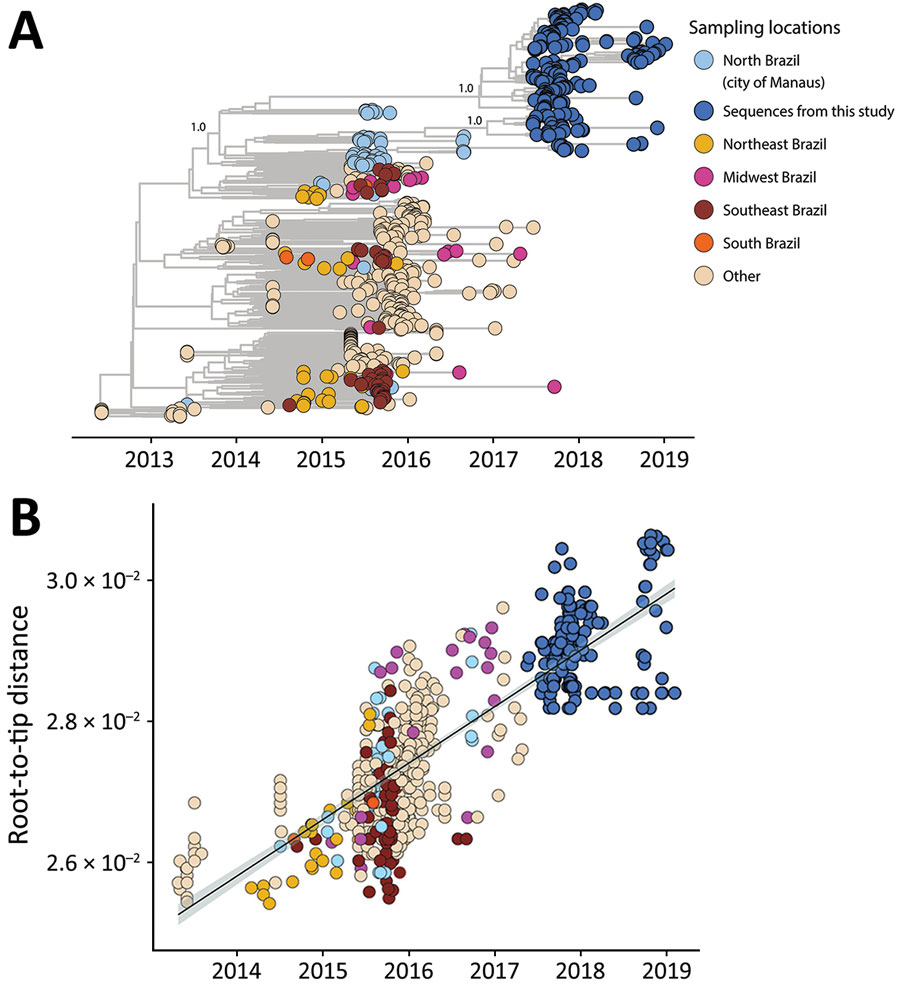Volume 30, Number 2—February 2024
Research
Evidence of Zika Virus Reinfection by Genome Diversity and Antibody Response Analysis, Brazil
Figure 1

Figure 1. Genomic epidemiology of Zika virus strains obtained from study participants in northern Brazil and reference sequences. A) Time-scaled maximum clade credibility tree of Zika virus Asian lineage in Brazil, including the 238 new genomes generated in this study (dark blue) plus 481 reference strains sampled worldwide. Tips are colored according to the sample source location. Values at nodes represent posterior probability support of the tree nodes inferred under Bayesian evolutionary analysis using a relaxed molecular clock approach. B) Root-to-tip regression of sequence sampling date against genetic divergence from the root of the outbreak clade.
1These authors contributed equally to this article.
Page created: January 09, 2024
Page updated: January 24, 2024
Page reviewed: January 24, 2024
The conclusions, findings, and opinions expressed by authors contributing to this journal do not necessarily reflect the official position of the U.S. Department of Health and Human Services, the Public Health Service, the Centers for Disease Control and Prevention, or the authors' affiliated institutions. Use of trade names is for identification only and does not imply endorsement by any of the groups named above.